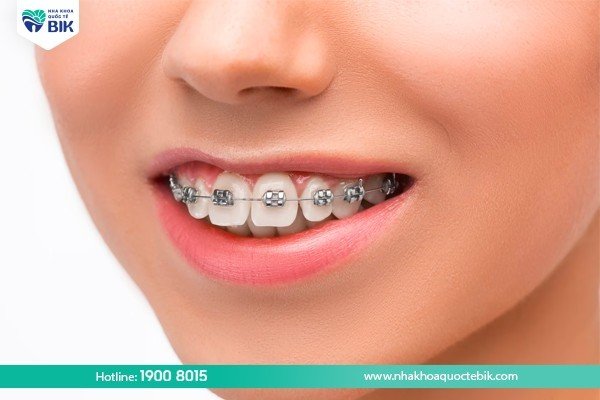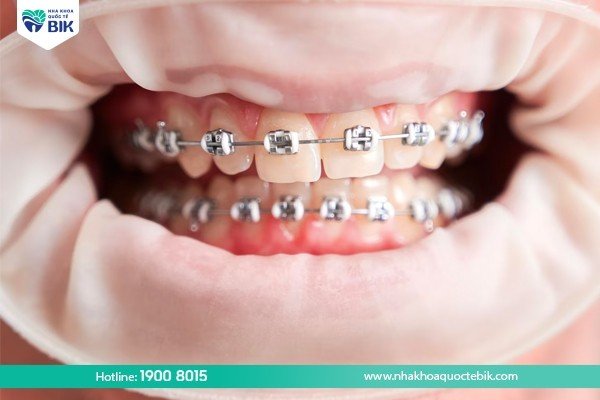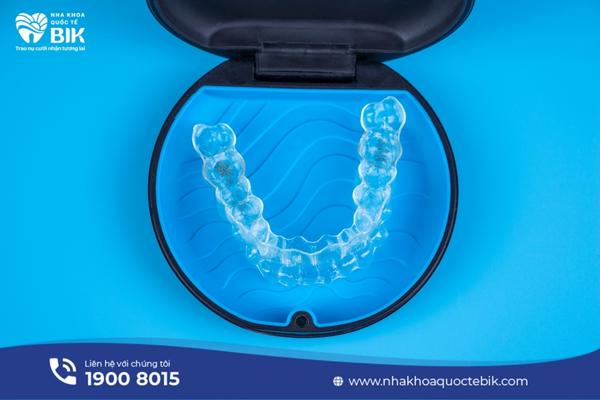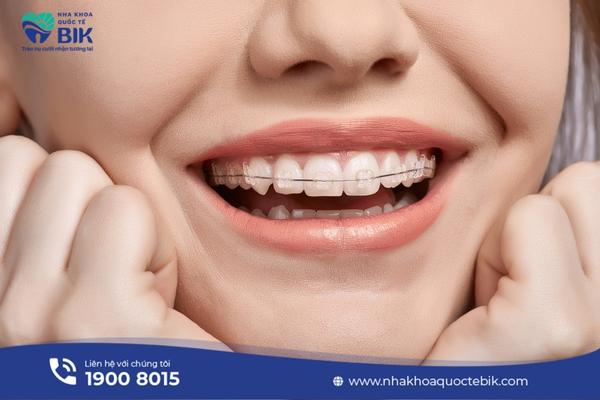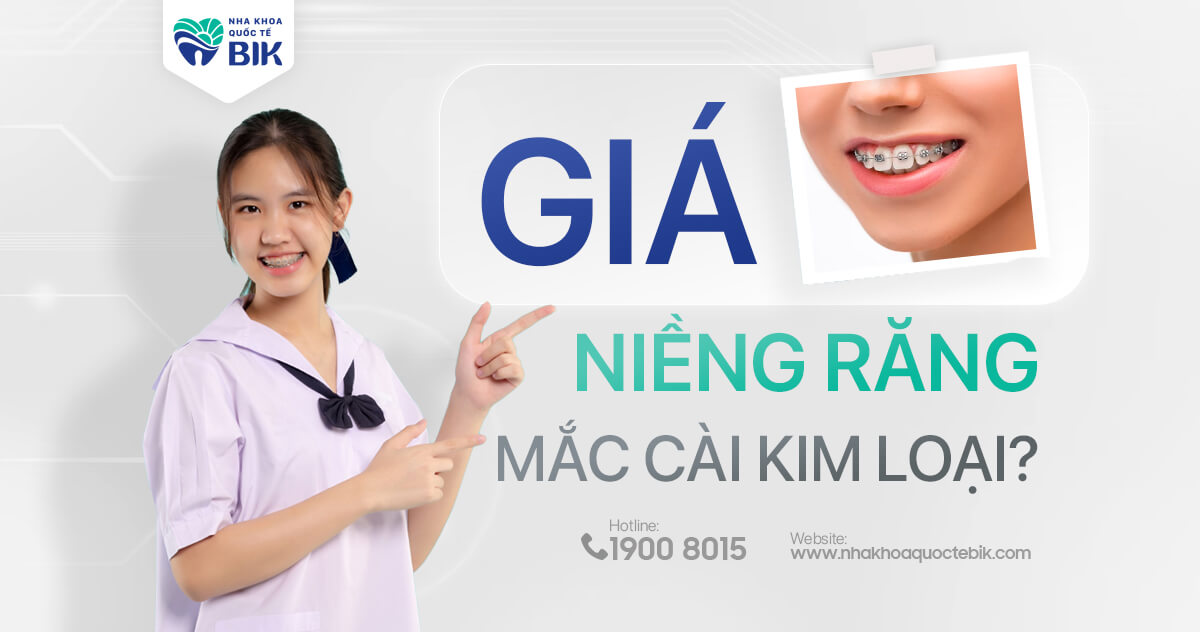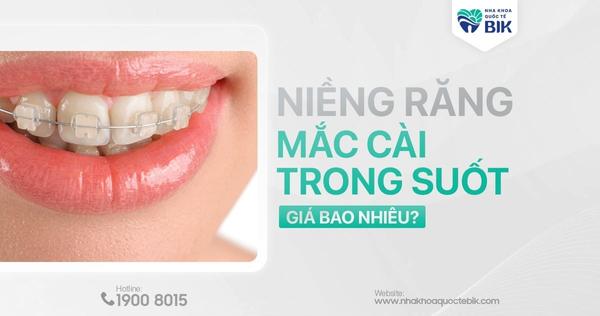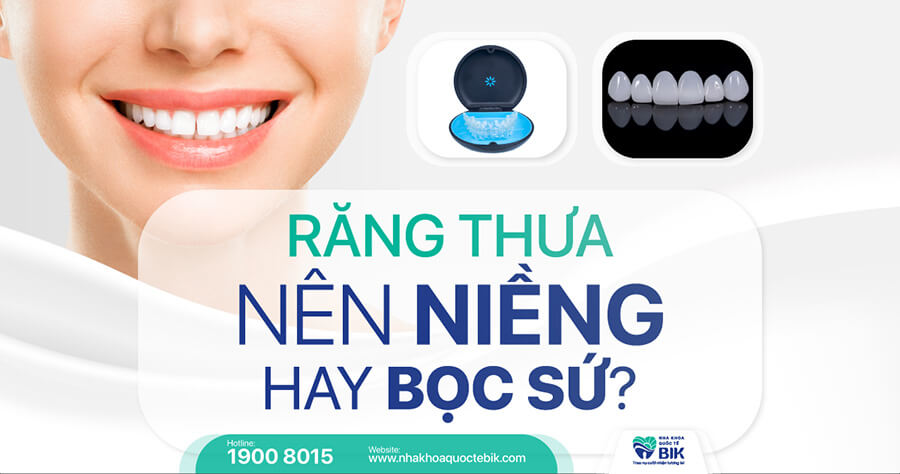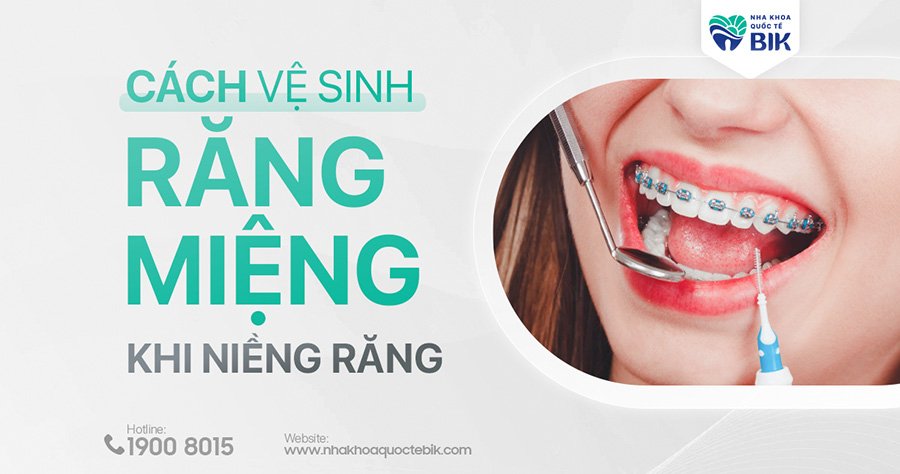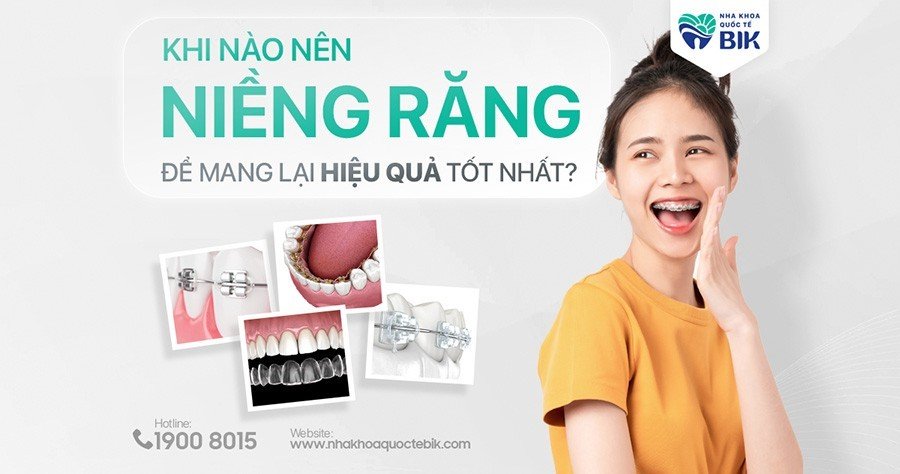
Braces are an orthodontic solution that is no longer strange today, bringing many outstanding benefits that other dental restoration methods do not have. When to get braces for the best results is of interest to many people. Accordingly, depending on the physical condition and different development of each person, the ideal time to get braces is between 6 and 12 years old.
1. Who should get braces?
Doctors will usually prescribe braces in the following cases:
1.1. When should you get braces for buck teeth?
Buck teeth or protruding teeth are a type of bite misalignment in which the upper jaw protrudes further than the lower jaw, causing the mouth to protrude. This condition not only affects the ability to chew but also causes loss of aesthetics, making many people feel self-conscious when communicating every day. At this time, braces are the best solution to effectively correct buck teeth.
1.2. When should you get braces for buck teeth?
Buck teeth, also known as reverse bite, are a serious type of bite misalignment. The standard bite is when biting the molars, the upper jaw must be outside the lower jaw. However, for those with buck teeth, the upper jaw will be recessed compared to the lower jaw. Buck teeth seriously affect the aesthetics of the face and also reduce chewing function. Therefore, braces are an effective solution to correct buck teeth.
1.3. When should you get braces for crooked teeth?
Crossed teeth are a fairly common condition in which teeth can protrude outwards, some grow inwards or tilted,… so when looking at them, the teeth will look very messy and unsightly. This also makes it easy for food to stick to the tooth surface because oral hygiene is difficult.
1.4. Deep bite braces
Deep bite is a type of bite misalignment, showing an imbalance between the upper and lower jaws, causing the lower jaw teeth to be sunken and hidden deep compared to the upper jaw teeth. The reason is because the lower jaw teeth grow inwards or the upper jaw bone is too large and long while the lower jaw bone is too small and short. This condition makes the ability to chew and tear food no longer as good as with abnormal teeth, but much more difficult.
2. Benefits after braces
After completing the braces process, customers can receive the following benefits:
2.1. Improve aesthetics
Braces help adjust the bite, making the face more balanced and harmonious. In addition, a smile with straight teeth also helps you feel more confident in daily communication, thereby bringing more opportunities in work and life.
2.2. Restore the ability to chew
A standard bite makes it easier to chew and tear food. Food being crushed thoroughly before going down to the stomach will prevent some digestive diseases such as stomach pain, digestive disorders, etc.
2.3. Dental hygiene
The teeth are moved to the correct position on the jaw, so removing food plaque is very easy with just a regular toothbrush. From there, bacteria do not have the opportunity to develop and cause oral diseases such as tooth decay, gingivitis, periodontitis, etc. Not only that, throughout the time of braces, you will have the habit of taking care of your teeth properly and regularly.
3. When should you get braces?
Surely many people still do not know when is the ideal time to do braces. Orthodontics on the foot not only guides the teeth to move to the correct position but also affects the jawbone to correct the bite. Therefore, braces at the right age will bring quick results because the older the jawbone becomes stronger, taking longer to treat.
According to the advice of experts, the most ideal time to do braces is 6 – 12 years old when signs of abnormal growth of permanent teeth are detected. The reason is because at this time the baby teeth have just been replaced and the jawbone is not really strong, so it will be easier to bend, the time for braces will be shortened and the pain will also be reduced.
Besides the age of 6-12, braces can still be done if the teeth and jawbone are still strong enough according to the doctor’s requirements. However, the bone structure is now stable and strong, so movement will be difficult, the time for braces may be difficult and the orthodontic effect will not be achieved at its maximum.
4. At what age should braces not be used?
Although braces can be performed outside the 6-12 age range, the general rule given by orthodontic experts is that after the age of 50, braces cannot be performed anymore.
The reason is that at this time the teeth have stopped growing and started to move into the degenerative stage. That is why the orthodontic process is very slow because you have to be very careful when affecting the teeth. At this point, oral health has also significantly declined, the teeth may have become loose and are also affected by orthodontic force, so they can easily become weaker, and the orthodontic results achieved are not as expected.
5. Popular orthodontic methods today
Customers can choose one of the following orthodontic methods depending on their needs:
5.1. Metal braces
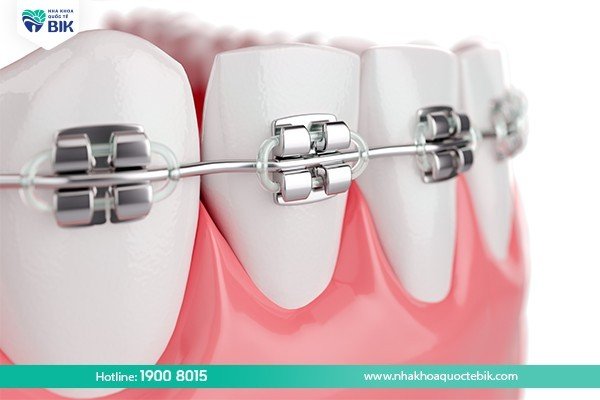
This method uses a system of archwires and brackets made of metal and fixed together with elastic bands to create a tightening force to help the teeth move to the correct position on the jaw. With the rigidity of the material, the force created is very stable, helping the orthodontic process to take place quickly and bring high efficiency.
However, traditional metal braces do not ensure aesthetics because the color of the metal is completely different from the color of the tooth enamel. This makes many people feel self-conscious and hesitant when choosing this method.
Metal braces currently cost from 30,000,000 – 45,000,000 VND/ 1 course.
5.2. Ceramic braces
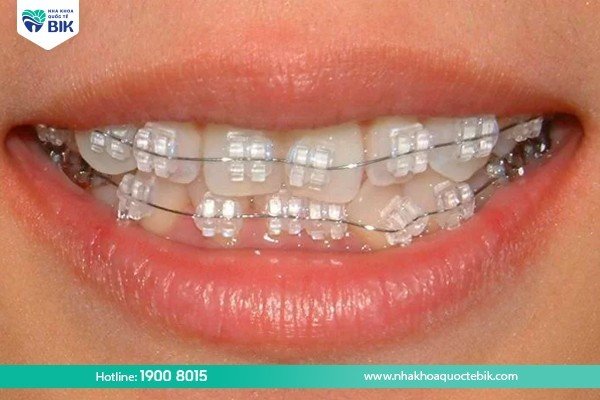
5.3. Self-ligating braces
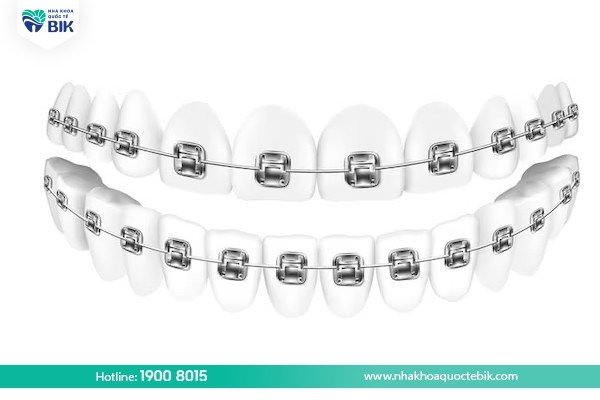
Self-ligating braces also use a system of archwires and brackets to help correct misaligned teeth, but the archwire will now be fixed on the bracket slot by an automatic sliding cover system. This structure allows the archwire to slide freely according to the movement of the teeth, which means that the tightening force will be created automatically, continuously and stably without the help of a doctor. When choosing this method, customers will save a lot of time because they do not need to go to the dentist regularly to adjust the tightening force.
Self-ligating ceramic braces cost from 35,000,000 – 60,000,000 VND/ 1 course.
5.4. Invisalign clear braces

Invisalign clear braces are an orthodontic technique that applies the most modern and advanced technology today. The braces of this method are a transparent brace tray that can be easily removed instead of the traditional wire and bracket system that is fixed on the tooth surface. The braces tray will be designed to fit tightly to the tooth body, fit snugly to the gums, helping to bring very high aesthetic value and still ensure the desired orthodontic effect.
Overcoming most of the shortcomings of traditional braces, Invisalign clear braces have a price ranging from 80,000,000 – 140,000,000 VND/ 1 course.
6. Price list of orthodontic services at BIK International Dental Clinic
BIK International Dental Clinic provides orthodontic services with a clearly published price list, specifically as follows:
So with the information provided above, BIK International Dental Clinic hopes that you know when to get braces to achieve the best results in the shortest time. For orthodontic treatment to be safe, customers should consider choosing to perform it at reputable dental facilities, with a team of doctors who are specialized in orthodontics and have many years of experience in the profession.

